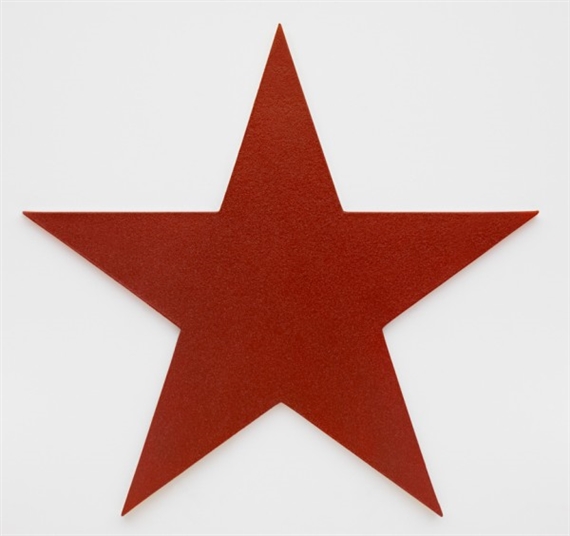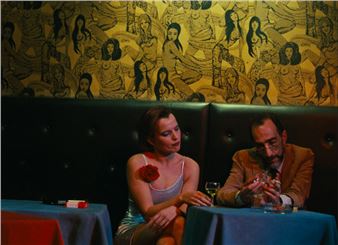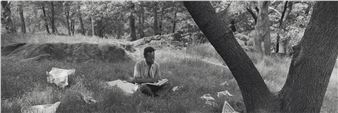The Shaped Canvas, Revisited
In the early 1960s, the shaped canvas emerged as a new form of abstract painting that reflected the optimistic spirit of a postwar space-race era when such forms as parallelograms, diamonds, rhomboids, trapezoids, and triangles suggested speed and streamlined stylization. The shaped canvas is frequently described as a hybrid of painting and sculpture, and its appearance on the scene was an outgrowth of central issues of abstract painting; it expressed artistsÔÇÖ desire to delve into real space by rejecting behind-the-frame illusionism. The defining moment for the paradigm occurred in 1964 with The Shaped Canvas, an exhibition at the Solomon R. Guggenheim Museum, curated by influential critic Lawrence Alloway with works by Paul Feeley, Sven Lukin, Richard Smith, Frank Stella, and Neil Williams. AllowayÔÇÖs show defined a key feature of abstraction and revealed the participating artistsÔÇÖ desire to overthrow existing aesthetic hierarchies. Half a century later, the shaped canvas remains robust in art, encompassing an array of approaches and provoking questions about the continued relevance of painting.
Coinciding with the 50th anniversary of the Guggenheim MuseumÔÇÖs historic show, Luxembourg & Dayan will present The Shaped Canvas, Revisited, a cross-generational exhibition examining the enduring radicality of the painted shaped canvas and introducing such parallel movements as Pop Art and Arte Povera into discussion of the paradigmÔÇÖs place in the history of modern art. The exhibition will include more than two-dozen works that connect the postwar history of the shaped canvas to present day practice. Paintings on view range from the two-dimensional shaped format to approaches that burst away from flatness altogether. All of the works in The Shaped Canvas, Revisited take a non-rectangular approach to painting that celebrates perceptual tensions between internal structure and bounding shape; between pictorial and three-dimensional concerns; and between the literal and the illusory. Among artists represented by works in the exhibition are Lynda Benglis, Lucio Fontana, Ron Gorchov, Mary Heilmann, Charles Hinman, Wyatt Kahn, Ellsworth Kelly, Roy Lichtenstein, Nate Lowman, Olivier Mosset, Elizabeth Murray, Kenneth Noland, Steven Parrino, Pino Pascali, Richard Prince, Harvey Quaytman, James Rosenquist, Paolo Scheggi, Frank Stella, Richard Tuttle, and Tom Wesselmann, among others.
The Shaped Canvas, Revisited also will debut new works created by Justin Adian, John Armleder, Jeremy Deprez, and Rebecca Ward inspired by the premise of the exhibition.

Recommended for you
In the early 1960s, the shaped canvas emerged as a new form of abstract painting that reflected the optimistic spirit of a postwar space-race era when such forms as parallelograms, diamonds, rhomboids, trapezoids, and triangles suggested speed and streamlined stylization. The shaped canvas is frequently described as a hybrid of painting and sculpture, and its appearance on the scene was an outgrowth of central issues of abstract painting; it expressed artistsÔÇÖ desire to delve into real space by rejecting behind-the-frame illusionism. The defining moment for the paradigm occurred in 1964 with The Shaped Canvas, an exhibition at the Solomon R. Guggenheim Museum, curated by influential critic Lawrence Alloway with works by Paul Feeley, Sven Lukin, Richard Smith, Frank Stella, and Neil Williams. AllowayÔÇÖs show defined a key feature of abstraction and revealed the participating artistsÔÇÖ desire to overthrow existing aesthetic hierarchies. Half a century later, the shaped canvas remains robust in art, encompassing an array of approaches and provoking questions about the continued relevance of painting.
Coinciding with the 50th anniversary of the Guggenheim MuseumÔÇÖs historic show, Luxembourg & Dayan will present The Shaped Canvas, Revisited, a cross-generational exhibition examining the enduring radicality of the painted shaped canvas and introducing such parallel movements as Pop Art and Arte Povera into discussion of the paradigmÔÇÖs place in the history of modern art. The exhibition will include more than two-dozen works that connect the postwar history of the shaped canvas to present day practice. Paintings on view range from the two-dimensional shaped format to approaches that burst away from flatness altogether. All of the works in The Shaped Canvas, Revisited take a non-rectangular approach to painting that celebrates perceptual tensions between internal structure and bounding shape; between pictorial and three-dimensional concerns; and between the literal and the illusory. Among artists represented by works in the exhibition are Lynda Benglis, Lucio Fontana, Ron Gorchov, Mary Heilmann, Charles Hinman, Wyatt Kahn, Ellsworth Kelly, Roy Lichtenstein, Nate Lowman, Olivier Mosset, Elizabeth Murray, Kenneth Noland, Steven Parrino, Pino Pascali, Richard Prince, Harvey Quaytman, James Rosenquist, Paolo Scheggi, Frank Stella, Richard Tuttle, and Tom Wesselmann, among others.
The Shaped Canvas, Revisited also will debut new works created by Justin Adian, John Armleder, Jeremy Deprez, and Rebecca Ward inspired by the premise of the exhibition.
Artists on show
- Charles Hinman
- Ellsworth Kelly
- Frank Stella
- Harvey Quaytman
- James Rosenquist
- Jeremy DePrez
- John M. Armleder
- Justin Adian
- Kenneth Noland
- Lucio Fontana
- Lynda Benglis
- Mary Heilmann
- Nate Lowman
- Olivier Mosset
- Paolo Scheggi
- Pino Pascali
- Rebecca Ward
- Richard Prince
- Richard Tuttle
- Ron Gorchov
- Roy Lichtenstein
- Steven Parrino
- Tom Wesselmann
Contact details


 ARTISTS
ARTISTS














